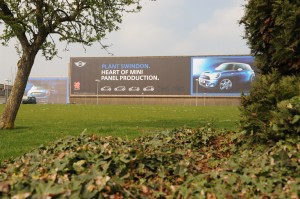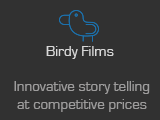BMW unveiled its third generation Mini yesterday at a glittering launch – the result of a £750m investment across its three UK plants including introducing world-class innovative manufacturing processes to its Swindon factory.
Millions of pounds have been spent upgrading the Swindon pressings plant, which will make nearly all the body panels for the new vehicle. 
BMW said Swindon now boasted world-class new body manufacturing technologies which would make production far more flexible, allowing the German group to produce a greater number of variants of the model.
Peter Schwarzenbauer, member of the BMW Group board of management, said: “The Mini brand represents the marriage of innovation and tradition. It is the inspiration for trendsetters and creative types all over the world.
“The aim of the new Mini generation is once again to rekindle enthusiasm for this car. That is why we are offering even more individual features, for example, to ensure that every new Mini is a statement of the owner’s personality.”
About 90% of the pressings and almost 80% of the sub-assemblies, such as doors, bonnets and tailgates for the Mini, are produced in Swindon.
The latest investment from BMW follows around £60m between 2004 and 2006.
The plant, which employs around 800 people, forms one corner of BMW’s Mini production triangle with sister plants at Oxford (formerly known as Cowley) and Hams Hall near Birmingham.
The Swindon plant, which opened in 1955 as part of automotive pressings group Pressed Steel to supply panels to what was then the Morris car factory in Cowley, has received investment in a trio of new body manufacturing technologies along with facility improvements that will increase its productivity and help maintain its excellent showing among independent reviews of automotive manufacturing efficiency.
Tactile laser welding – one of the new technologies at the plant – is used to weld together the eight different pressed parts that make up the complex bonnet panel that is such a distinctive feature of the Mini.
This innovative technique involves bending the bonnet’s outer panel to touch the inner panel. The two are then joined using a fine weld wire on a laser to create a continuous and solid joint. This removes the risk of condensation developing and causing rust.
Another innovation – a first for the BMW Group – is the development of a remote laser that can produce long, continuous joints of greater precision, and is also quicker than spot-welding.
Also new is a facility that enables up to five different door designs to be produced in the same production cell by the same set of robots using a new fixture-holding system.
Assembling such a wide range of designs on the same hardware is complex, but it is more efficient. A new system for switching the tooling from one model to another has also increased efficiency.
The plant’s 14 fully-automated press lines – some of which are almost as old as the factory itself – have also been upgraded in a way that is extending their term of service without hitting quality, reliability or efficiency. This smart investment approach has contributed to Swindon’s excellent rating in influential analyses assessing global automotive production efficiency.
The plant’s tool rooms have also met the challenge of designing tooling used in its giant presses to suit the unique styling of the Mini.
For example the tailgate on the new Mini has cut-outs in its sides to accommodate the new tail lamp style. While it has been challenging to produce the tooling to achieve this, the result is a tight and consistent fit.
According to a report produced by the Harbour Consulting Group, an international benchmarking organisation which specialises in the car manufacturing sector, the plant compares favourably to other far newer installations, both internally in the BMW Group and externally at rival car makers.
Harald Krüger, member of the BMW Group board of management, said: “Our total investment of £750m in our British production locations between 2012 and 2015 underscores the importance of the Mini production triangle within our global production network. The UK is the heart of Mini production – thanks to the experience, competence and strong commitment of all our employees.”
His fellow BMW Group board of management member Peter Schwarzenbauer added: “The Mini brand represents the marriage of innovation and tradition. It is the inspiration for trendsetters and creative types all over the world. The aim of the new Mini generation is once again to rekindle enthusiasm for this car. That is why we are offering even more individual features, for example, to ensure that every new Mini is a statement of the owner’s personality.”
Both Swindon and Oxford plants have developed flexible working methods that allow supply to better meet demand.
The new Mini is longer and wider than its predecessor, providing more interior space for the driver and passengers. Extensively revised suspension technology, reduced weight and increased rigidity have intensified the typical Mini go-kart feeling.
It will be launched into UK showrooms next spring.
The original Mini first hit UK roads in 1959. BMW revived the brand in 2001 and gave it a facelift with the second generation Mini in 2007.














